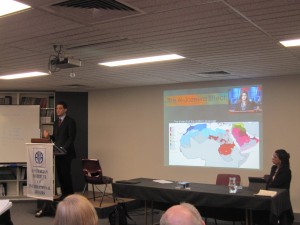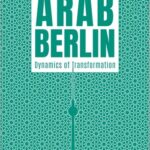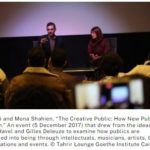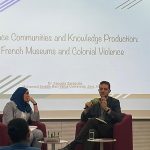Presented at the Australian Institute of International Affairs – ACT Branch, 18 August,  2011
2011
Transcript taken from http://www.aiia.asn.au/act-papers/doc_details/798-amro-ali-middle-east-specialist-and-satirist-transcript
A common question that I was asked by the Egyptian youth when I was in Tahrir Square
in Cairo was ‘what do Australian think of our revolution?’ I replied that they were very
impressed, but if you want to push an Egyptian youth’s buttons you just have to say ‘you
guys were inspired by Tunisia’. That is like Australia being inspired by New Zealand.
For a period I was travelling between Cairo and Alexandria quite often to study how
protests were organised and behaved in the two cities. When I was in Alexandra in what
was dubbed The Second Revolution, in late May, one of the lead protesters took out his
Smart Phone and found out through his Al Jazeera app. what was going on in Cairo. He
yelled to the crowd ‘our brothers in Cairo have reached one million’, the sub-text to that
being ‘we can do better’.
To understand Cairo and Alexandra, it is rather like the Melbourne-Sydney rivalry except
that one did end up being the capital city.
As trivial as this may seem, it is underscoring something that needs further discussion in
the discourse of the Arab Spring. They are all perceptions and influences – and the values
and narratives that shape and are shaped by them. I want to look at three aspects: Imagery
as an agent of change; Egyptian soft power and how this impacts on the Arab Spring and
finally where Australia fits into this emerging new Arab order.
Revolutions and civil disturbances have common underpinnings – rampant corruption,
rising food prices, unaccountability, rich-poor divide, the list goes on. Yet the masses do
not react to these factors alone, let alone unemployment figures. They respond heavily to
the relationship between their private beliefs and public lies that are no longer
sustainable. The perception of a fracture in the status quo enables the galvanisation of
cascading effects. This in large, is the modus operandi of the Arab Spring.
In his book Private Truths, Public Lies, the Social Consequences of Preference
Falsification, Timur Kuran explains the consequences of expressing support for an
opinion that is not actually one’s belief, or making a choice against one’s actual desire.
He calls it preference falsification – where the status quo owes its stability to preference
falsification, there are people waiting for an opportunity, and perhaps others who can
easily be induced, to stand up for change.
Some eye-opening event or an apparent shift in social pressures may cause public
opposition to swell. The public preferences of individuals are interdependent, so a jump
in public opposition may be self-augmenting. Under the right conditions, every jump will
galvanize further jumps.
This reminds me of the 1940 classic novel, The Heart is a Lonely Wonder. One
underlying message that comes from the reading is that people see what they want to see,
and in the era of digital cameras and rapid transmission of images, they are given plenty
to see and act upon.
What the Arab Spring and the Egyptian revolution in particular have illustrated is the
power of images to ignite and reignite the momentum. With the advent of new
technologies this has produced a visual overload with a story that has been saturated with
images and symbolism to spearhead continuing values and narratives.
Jonathon Jones from the Guardian newspaper puts it like this:
“‘It is impossible to overstate the visual and spectacular nature of the revolution. From
the first time a crowd surges into a public square to the last cannonade, revolutions live
and die by the image. A revolution is a moment when politics becomes ecstatic, symbolic
and existential. The usual slow routine of news and debate suddenly speeds up and the
fastest form of communication is the visual image. The first phase of the Egyptian
revolution began with the image of that great people’s gathering in Tahrir Square; the
second has begun with the picture of a fallen tyrant.”
In the case of Egypt what we have seen here is a series of images that had a profound
effect on the Egyptian psyche and altered their perceptions, behaviours and activities in
the process.
The first iconic image was on the first day of the revolution, on the 25 or 26 of January,
of a lone protester walking up towards the security forces. It became the equivalent of the
Tiananmen Square tank man, a very common profile picture on Facebook, with the
caption ‘Walk Like an Egyptian’.
The next picture is Christians guarding Muslims while they are praying. This was very
symbolic given that a month earlier there was a church bombing in Alexandria and the
fear of sectarian tensions flaring up. What Tahrir Square did was take away the divideand-
conquer strategy of the regime. The following weekend the Muslims protected the
Christians while they were praying.
The third image was one of Mubarak’s fatal mistakes in sending the regime thugs into
Tahrir Square on 2 February. The night before he had given a speech and people were
polarised about whether they should wait for Mubarak to step down in September or
whether he should leave now. This incident sealed his fate and resulted in more eruptions
of protest around the country.
The fourth image is of a Google executive who started the “We are Khaled Saeed”
Facebook page that was a pivotal factor behind the revolution and was in prison for 13
days. Upon his release, he was interviewed for about half an hour on private satellite TV,
and was asked a question about what he thought about all the Egyptian youths who had
died and he was shown pictures of the deceased, he started crying. Then he said the one
line that changed a lot of views around the country when he said to the mothers of the
martyrs “I’m not a hero, I slept for 12 days…The heroes, they’re the ones who were in the
street, who took part in the demonstrations, sacrificed their lives, were beaten, arrested
and exposed to danger…I swear to God, it’s not our mistake. It’s the mistake of every one
of those in power who doesn’t want to let go of it,” and he cried his way out of the studio.
This event was partially responsible for leasing a new life on the revolution when it
looked as though it might die out
The next image is of a woman kissing a soldier. This symbolises the unity of the people
and the army against Mubarak’s wishes because he wanted the army to fire on the people.
The next image, which I can’t date exactly but I assume it is towards the end of the
revolution. I have seen it in so many publications and on posters. It is the joy and ecstasy
of getting rid of a tyrant after 30 years.
The final picture is Mubarak on the first day of his trial in a cage in court. So what we see
is a series of images that have set a precedent in the Arab world for what is possible. The
scene of Mubarak in court is quite unprecedented for the Arab world.
The trial of Saddam Hussein was seen as a show trial and an act of sectarian vengeance,
while Mubarak’s trial was seen as a result of people pressure. The image of a humiliated
Mubarak has been a nightmare scenario for all the autocrats in the region which explains
why the trial was not shown on state TV in Libya, Syria and Yemen.
Yet images alone can’t give direction, and thus the need for regime opponents to look at
symbolism.
What reform movements always do is to look for a unifying poster child. Egypt got its
Khaled Saeed; Tunisia got its Mohamed Bouazizi and Syria Hamza Ali-Khateeb. Hamza
was a Syrian boy who was brutally mutilated in a most horrific and disturbing way.
Mohamed set himself on fire and kick-started the Arab Spring as a result. To those who
are not familiar with Saeed, he was a 28-year-old Alexandrian who died at the hands of
the police in an internet café last year and became the unifying symbol of the Egyptian
revolution.
Why him and not the countless others who suffered at the hands of the regime? Let’s look
at the often repeated account: A young man enters an internet café to upload a video to
YouTube of crooked police sharing drug spoils. Here you have a powerful figure that
now encapsulates the younger generation. He was young, social media savvy and antiauthoritarian.
On top of that his name is given to one of the largest activist Facebook groups We Are All
Khaled Saeed. Much of this does not square with witness accounts and primary sources I
looked into, but that does not matter – people will see what they want to see. The
Egyptian pro-democracy movement found a unifying poster child and Khaled Saeed’s
myth was set in stone.
Looking for historical parallels, you can think of Rosa Parks. The story can be quite
telling: A 42-year-old African American who refused to give up her seat to a white man
in Montgomery, thus lighting the fire of the Civil Rights movement for the next decade.
What is most overlooked is that the Civil Rights organisation, the National Association
for the Advancement of Coloured People, was proactively searching for a Rosa Parks.
They had rejected previous cases where the black victim might damage their cause such
as being pregnant out of wedlock. The NAACP was going to construct the narrative for
black emancipation. For Martin Luther King Jr and the NAACP perceptions of
legitimacy for the black struggle had to be maintained at all costs. Rosa Parks, a middleaged,
church-going seamstress approached the NAACP and volunteered to be a test case
and history took care of the rest.
Likewise, Khaled Saeed was moulded in order to symbolise the struggle for freedom.
Such figures help to personalise and humanise complex issues that can often drift into
murky abstractions. As long as the Arab Spring pushes onwards we will continue to see
the rise of icons. What is giving these icons a larger than life image is social media.
Social media is aiding the rapid dissemination of symbols, images and information. One
of the early examples of the Arab Spring’s transnational activism were Tunisian bloggers
telling Egyptian protesters to use vinegar or onions in their scarves to ward off the effects
of tear gas.
The role of social media has been a divisive debate with many on the conservative end of
the spectrum downplaying it to such an extent as to make in inconsequential. You know
you are in for a long night when you get a sceptical statement that Facebook did as much
for Egypt as the fax machine did for the fall of the Berlin Wall.
But to the contrary, the notion of the Youth Revolution has nurtured a discourse that sets
the youth dramatically apart from older living generations. Social media is transformed
into the defining hallmark. The application of Facebook, Twitter, YouTube and other
tools has cultivated a self-perpetuating belief that such tools are instrumental to enacting
positive change, and hence the more people who use such technologies, despite not
having placed much importance on them before.
Moreover, online identities become increasingly important to the revolution. For
example, it is not uncommon for youths to change their birth dates on Facebook to 25
January 2011 the day the revolution began.
I do not for a moment want to suggest that these technologies caused the revolution, but
they did facilitate it, and it is difficult to study the revolution without giving prominence
to social media. To get a sense of the perception of Egyptians on this issue, you have to
listen to their jokes and one of the jokes that is making the rounds is this one:
Mubarak goes to the afterlife and meets former Presidents Nasser and Sadat, and Nasser
say that he died of poison and Sadat says he died of bullets and they ask Mubarak how he
died, and he says they (Egyptians) killed me by Facebook.
The role of Al Jazeera in the uprising cannot be emphasised enough and has been
discussed elsewhere, yet Al Jazeera and Arab satellite television in general has played a
subtle role in fashioning the Arabic language.
The Arabic language consists of the literary standard Fusha or the Modern Standard
Arabic (MSA) which is taught in all schools, this is close to the classic literary standard.
In the 20th century some Arab populations often faced the problem after school that
unless their work required MSA – such as in diplomacy, banking or the clergy – they
drifted away from it and resorted to the colloquial dialect.
This was fine if it was limited to the cities and towns, but transnationally, it was a
different story. Fifty years ago if someone living in Lebanon wanted to speak to someone
in Morocco, they would struggle to communicate with each other as neither would
understand each other’s dialect.
One way to get around this was to communicate in the Egyptian dialect due to the
widespread Egyptian popular arts, so you had this tiny geographic space in the Nile Delta
influencing a wide section of the Arab world. With the rise of satellite television and Al
Jazeera the MSA was pushed forth and this re-engaged Arab viewers with the MSA.
This is not to say that Arabic viewers could not comprehend the standard Arabic before,
but satellite TV invigorated the debates, quiz shows the panels, meaning that viewers
were engaging with each other across national boundaries, while State TV receded into
the background.
So the Arab youth are a generation that have been raised in the era of Al Jazeera and
other stations that strengthen the post schooling use of the MSA language. To those of
low socio-economic backgrounds, the saturation of Al Jazeera and other satellite
television stations enabled a basic level of understanding of what was occurring in the
world.
To understand this quasi-standardisation of the Arabic language is to understand the rapid
transmission of perceptions and influences and the Arab world’s current upheaval. The
cross-pollination of discourse meant Arabs started to ask the hard questions of each other.
Questions like ‘why does Spain have a bigger GDP than the entire combined GDP of the
Arab world?’ ‘How do China, India and Brazil move ahead while Egypt is left behind?’
So bit-by-bit, day-by-day, common grievances were established across national
boundaries.
The idea that Arabs have been swindled by higher politics started to gain traction more
than ever before. Moreover, the success of overthrowing Mubarak has rekindled one of
Egypt’s strongest traditional assets.
One pivotal factor that is defining the Arab Spring is a resurgence of Egypt’s ‘soft
power’. The term was first coined by Joseph Nye as an alternative to hard power which
means military might and economic sanctions. Soft power emphasises the power of
attraction as opposed to the power of coercion. It is an ability to influence and shape the
preferences of others as a derivative of a nation’s culture, values and achievements.
The concept of soft power has often been used by the US and recently China, but the
world has gravity centres of soft power. Just like India has a soft power influence over
the sub-continent and Brazil over Latin America, so does Egypt over the Arab World.
This comes in the form of the Islamic discourse, making it the intellectual nucleus of
Sunni Islam. Then there is Egypt’s popular music and film industry in a widely
comprehensible dialect that, for example, is adopted by Lebanese pop singers.
Egypt’s mixture of soft power and hard power reached a peak in the 1950s and 60s. The
rise of Nasserite Egypt, underpinned by pan-Arab ideology, inspired the overthrow of
monarchies and colonialism across the Arab World. In Arab eyes the Egyptian prestige
received a battering following the 1967 War, but moreso following the signing of the
Camp David Treaty in the late 1970s.
The overthrow of Mubarak has been seen as Egypt’s resurgence to its prominent role as
the leader of the Arab World. There is a logical outcome to this.
The Egyptian Revolution mesmerised the world, but to the Arab countries its influence
has been profound. What I have noticed over the past few months in Tahrir Square is the
number of non-Egyptians filling up the square to rally people to their cause. There were
many Libyans, Palestinians, Yeminis and Syrians as well as throngs of Egyptian
supporters utilising the square for their democratic struggles. Everything from the
discussion of strategies, tactics and ideas to publicising and enacting their motives has
been witnessed there.
This is not just symbolic of Tahrir Square’s perception as a source of legitimacy, but a
perception of Egypt as a leader of the Arab world. Political, social, cultural and religious
movements in Arab countries take their cues more often than not from developments in
Egypt. This is why it is critical that Egypt gets its democratic experiment right.
One country that knows this problem too well is Saudi Arabia which is struggling to halt
the cascading effects. The Saudis have extended an invitation to Morocco and Jordan to
join the Gulf Cooperation Council. According to a School of Oriental and African Studies
scholar, the aim is to construct the perception that revolutions are a phenomenon that
only affects republics but never touches a monarchy.
Strategists in Riyadh are reviewing Jordan’s powerful security apparatus as a useful
buffer against revolutionary penetration from neighbouring Syria. Morocco is the one that
has puzzled many observers due to its location at the other end of the Arab world. Yet its
advantage is that it has a 35 million population and a large military which may take the
place of Saudi Arabia’s traditional ally – Egypt.
The discussion of perceptions and influences inevitably brings up where Australia fits
into this. Let’s take the street-level view. When testing their knowledge of Australia –
and this is all anecdotal – Egyptian’s youth’s perceptions of Australia hovers around the
stereotypes. I remember one saying the Opera House which I thought was an upgrade
from kangaroos. But when they do say kangaroos, I point out that back in Australia they
associate Egypt with camels, so I think our ignorance is mutually complementary.
English language schools that hire Australians often describe them as humble and
unassuming, remembering the Aussie youth that go to Bali are not the same ones that go
to Egypt.
Looking at a wider historical timeline of Egyptian perceptions of Australia is a mixed
bag. You have the Aussie soldiers who trained in Cairo. They made themselves into the
popular literature of Naguib Mahfouz, not in the most positive light unfortunately. Then
you had Menzies who was given the unenviable task of handing an ultimatum to Nasser
during the 1956 Suez Crisis. I remember in 1998 when Richard Butler was leading the
weapons inspections in Iraq, the press and the street called him ‘that Australian’ in the
not so nicest way.
Yet such instances, including the Iraq War, have not been sustained enough to translate
into negative public opinion against Australia. When Australia really does well is during
the Olympics, but public diplomacy is not an every four-year event.
The United States and the United Kingdom have born the full brunt of anti-Western
attitudes in the region. Australia fortunately does not have much historical baggage in
that part of the world. Thus Australia has the advantage of an easier platform to start off
on. A discussion on perceptions and influences would logically conclude that Australia
needs to follow up on public diplomacy initiatives.
For Australia’s aspiring middle power status, it needs to match resources to the task
ahead. Along with perceptions and influences, a country like Egypt affects Australia in
many tangible and intangible ways. If you look at energy prices, the 18 days of the
Egyptian Revolution alone highlighted the precarious position of world markets and in
particular the sudden spike in energy prices.
While Egypt is neither an oil exporter, nor a regional stock market heavyweight, it is one
of the few hotspots, being home to the Suez Canal and Sumed pipeline that runs from the
Red Sea to the Mediterranean, where events can dramatically have an outsized impact on
global energy prices. This illustrates the need for global stability, but this time Australia
will no longer need to associate itself with autocracy, at least for Egypt, and supporting
democracy is a guarantee to stability.
The other major factor is Australian education. The Middle East’s growing contribution
to Australia’s second largest export after mining – international education – has seen
educational links between the Middle East and Australia grow in strength in the past
decade. Australian engagement with the Middle East offers Arab students a viable
alternative to other study destinations. An emerging Egyptian middle class is going to
pursue the route of international education, similar to the Gulf students, except to a more
proportional level than before.
Due to the location of the Suez Canal that handles eight per cent of the global sea trade,
Australian trade links with Europe are inevitably impacted. Instability may give rise to
shocks that menace global supply chains, distribution channels and infrastructure that
Australia needs for its international operations.
Finally, destabilisation leads to radicalisation. Egypt’s role as the heart of intellectual
Sunni Islam plays a pivotal role in spearheading the religious discourse in the wider
Islamic world. Egypt’s religious institutions have spawned much constructive debate, but
aberrations have bred the intellectual foundations of radical Islamism. Accordingly
Australia’s neighbouring Islamic groups are equally inspired to feed off developments in
the Middle East – Egypt in particular – to legitimise their agendas.
I remember once when I was in Jakarta I was invited to a mosque and when they heard I
was of Egyptian heritage they started asking me all these questions about jurisprudence
and Sharia Law, and other questions I could not answer, it was just by my association
with this heritage that gave them this amplified image.
I am currently working on a project with the Lowy Institute on the way Australia can
engage with the Middle East, through Egypt’s youth groups, as a conduit for change,
looking at initiatives such as university partnerships and cultural diplomacy. We cannot
pretend that Australia can match US’s resources, but what it can do is have a
disproportional effect by focusing on the educational system and the leaders of tomorrow.
As the Arab Spring evolves into a contest of values, Australia will need to realign itself
with the pluralistic, progressive and reformist values – a process driven by the youth.
Egypt’s youth are going to have a significant impact on the debate in the next few
decades and Australia needs to be supporting these values in the debate as annuciated by
the youth.
Otto von Bismarck once said that political genius is to listen to the hoof beats of history,
and those hoof beats are coming from the youth groups who harbour anti-authoritarian
sentiments and are poised to play a leading role in a future Egypt.
Egypt’s youth have capitalised on their country’s soft power image and have transcended
borders. They delivered medical convoys across Libya, pressured the Egyptian authorities
to open the Rafah crossing to Gaza, travelled to Sudan to meet with the State Minister for
Foreign Affairs, and played a major hand in fashioning the non-violent but short-lived
third Palestinian Intifada.
The democratic transition will not be easy, but if a new pluralism and liberalism emerges
from the new political spaces, carved by men and women of various backgrounds, this
will send a message to the region about change.
I am updating all the developments concerning the Arab Spring on my website
amroali.com.
Thank you very much.
QUESTIONS
You alluded to the need for Australia to concentrate on Egyptian youth and the
leaders of tomorrow. There is great euphoria at the moment but it may not live up
to expectations. What will emerge in the next 20 years?
Looking at this from a civil society point of view: the youth are fearless. This is what
defines the post-Mubarak Egypt. I think the sub-text of what you are saying is concern
about the ghost of 1979 Iran. This what many observers fear. So will it be an autocracy in
a different form such a theocracy? The answer to that is no.
The reason is that economic factors drive political imperatives. Take the example of Iran.
It is an oil economy. Oil economies do not need friends in the international community to
sell oil. But Egypt’s economy is service driven, especially by tourism. It needs to have
good relations with the public overseas as well as the leaders. It cannot afford to do as
Iran does.
The military has learnt the lesson from around the time of the revolution in 1979. Then
the Iranian military did not get involved and left the groups to play off each other. In
Egypt they got involved. You also have to look at cause and effect. If one per cent of the
Egyptian population protest it paralyses the economy to an extent.
There is a saying – who controls Tahrir Square controls Cairo; who controls Cairo
controls Egypt. So the centre of gravity is Cairo and to a lesser extent Alexandra and they
have weekly protests that are consistently calling for democratic reforms.
One thing I will say about the youth is that they are impatient and just being with them
and studying them has given me much optimism. These will be the ones that will take
over eventually – that is 70 per cent of the population who are under 30.
You spoke of symbols and images. What of philosophy and politics – a plan to go
forward? Is there a political vacuum forming?
There is a problem which I have noticed in that there is no key figure that can lead Egypt
through its transition. Egyptian TV and the discourse on the street are heavily saturated in
the revolution. There are ads on television and people and organisations trying to jump on
the bandwagon such as Vodafone who are even trying to take credit for the revolution.
The problem lies in how the revolution started – it was a decentralised and horizontal
movement. Regimes are used to a hierarchical approach but because of social media it
gave faceless protesters an advantage. People were networking and coming out at the
same time in what are called flashpoint protests in a matter of hours. Yet bringing a
regime down is easier than building something up that is newer and untested.
A Gallop Poll was done in 2008, in which 98 per cent of Egyptians said religion was
important in their lives. There was nine per cent who said they wanted separation
between religion and the state. There was 14 per cent who wanted a theocracy and 70 per
cent wanted an advisory role for religious scholars.
Egypt is the second highest, after Lebanon, to accept another religion, despite the flareups
we have seen this year, and most importantly, 97 per cent support the constitutional
guarantees of freedom of speech – the highest in the Muslim world.
So the underlying message is that Egyptians are religious but because they pray five
times a day does not mean they are part of the Muslim Brotherhood. The Islamists often
try to play identity politics, and the problem with the secular liberals is that they attack
core identities rather than the policies of the Islamists.
I know what Egyptians don’t want. They don’t want tyranny whether it is civil, military
or religious, but the philosophy that is evolving emanates from the volatile defined Youth
revolution. The youth have become very emboldened, but the euphoria they have
generated has not yet been translated into meaningful platforms. There is nothing solid,
but I would say that people are moving more towards liberalism and away from a
religious autocracy.
They have seen what has happened in Iran and Afghanistan and Saudi Arabia in the past,
and they are just not finding those models appealing.
Will the Egyptian military adopt a secular position in the same way as the Turkish
military?
In Turkey the military always got involved in Turkish politics, but it was thanks to the
push for entry into the European Union that the Islamic Party was able to curtail the
powers of the Turkish military.
The Muslim Brotherhood is looking towards Turkey as a model, rather than Iran, because
it can see now that you can be a Muslim majority country, as well as democratic and
economically successful. Bread and butter will be the language that is spoken.
As for the Egyptian military, they do have economic interests. To what extent they will
let go is anyone’s guess, but if you read the articles written directly after the revolution
there was a lot of pessimisms. The revolution’s goals still have a long way to go with
matters like cancelling the emergency law and ceasing military trials. Ironically,
Mubarak’s is a civilian trial. Having said that the Egyptian masses love the military,
because it is a conscripted country. So it is really anyone’s guess and I think towards the
end of the year we will know more clearly.
Can you give us insights into how relationships will develop with Egypt’s
neighbours – Israel and the Shiite states?
Egypt does not want a war with Israel. It has moved on from that. Fifty-four per cent of
Egyptians polled want the Camp David Treaty to be reviewed. The reason for this is that
Egyptians have the perception that they have been taken for a ride, because the treaty
allowed Israel to get rid of its strategic threat from the south and that enabled
intensification of settlement activity in the Occupied Territories as well as wars in
Lebanon.
Also Mubarak’s close relationship with Israel was something that really frightened them
– this included his complicity in the Gaza blockade as well as the gas prices that were
sold under the market rates to Israel. The younger generation have matured. They can
distinguish between Jews and Zionism – something you will generally not find among
people over 40.
As regards to Iran, strategic concerns exist, but on the cultural and street level, they don’t
have a problem with Iran. For a start they don’t share a border. Historically Egyptians are
not anti-Shiite because there is no sizeable population of Shiites in Egypt that would be
of concern. If you go back in history the Fatimids who ruled Egypt for 200 years were
Shiites, and despite the pros and cons of that era, they generally did leave a positive
legacy in terms of literature, art and architecture.
Also from the elite point of view, King Farouk, who was deposed in 1952, was married to
an Iranian princess; the Shah of Iran is buried in Cairo.
We are going to see a reengaged Egypt that will be reasserting itself as the regional
power, forming new alliances.
The Egyptian view is that Israel has had it quite easy for the past 30 years but this time it
is going to have to play a more constructive role in the region, particularly in relation to
the Palestinian issue.
Have there been any moves towards a constitutional convention? Given the degree
of corruption that existed before, how are the Egyptians going to get rid of it?
Egypt had a constitutional referendum earlier this year and I do not know anyone who did
not vote in that referendum. It was unprecedented, and the demands for free and
transparent elections are louder than ever.
Corruption fighting has been taken up by civil and youth groups. Historically, corruption
decreases dramatically in Egypt following major revolutions and coup d’états, such as the
years following 1919 and 1952. I do not automatically tie the eventual decrease in
corruption to the events this year, but corruption was one of major driving factors behind
the youth revolts.
On a similar point, the transition to democracy is definitely not going to be easy, but the
fact of the matter is that the Arab World depends on this image of a democratic and anticorrupt
Egypt for them to take the cues to follow through. This is just how the region
works historically.
You have Nasser taking over power, then you see a series of coups and revolutions
espousing Nasserism in the Arab world. But democracy, anti-corruption, and the rule of
law is coming from the younger generation and whenever you have a youth bulge in
history dramatic changes always follow. We had this in Australia and in the West
generally with the post-war baby boomers. They did not overthrow governments but the
counter-culture movement in the 1960s led to radical changes that redefined society.
Democratic change is not going to happen overnight but we are going to have to engage
with the youth, not with the elites or those who are part of the old regime or anyone who
might try and torpedo reforms.
The youth in general are very pro-democratic, even those who consider themselves to be
Islamists. There is a momentum that they are acting upon and a desperation to change
Egypt for the better.
I will give you an example from when I was in Tahrir Square. Usually Friday is a day
when everything flares up after prayers. Around 2pm people gather there. There was this
one girl who was on the microphone shouting pro-democracy slogans. She was on the
microphone from 2pm all the way to 10pm. She was inter-changing with her colleagues,
but if I tried to do that I would lose my voice after 20 minutes.
There was a passion and intensity that kept her going, and when I spoke to her she told
me she had been arrested many times and she showed me the beatings she had received,
but she didn’t care. She just came back and did what she did.
I don’t want to exaggerate and say that all Egyptian youth are doing this. People still have
to earn a living, but it is enough to see the cause and effect. Just like when there was a
high suspicion that Mubarak’s trial was going to be delayed, there was a mass protest
organised based on the mere suspicious perception that he might be let off easily. In the
end he was brought to trial this month.






